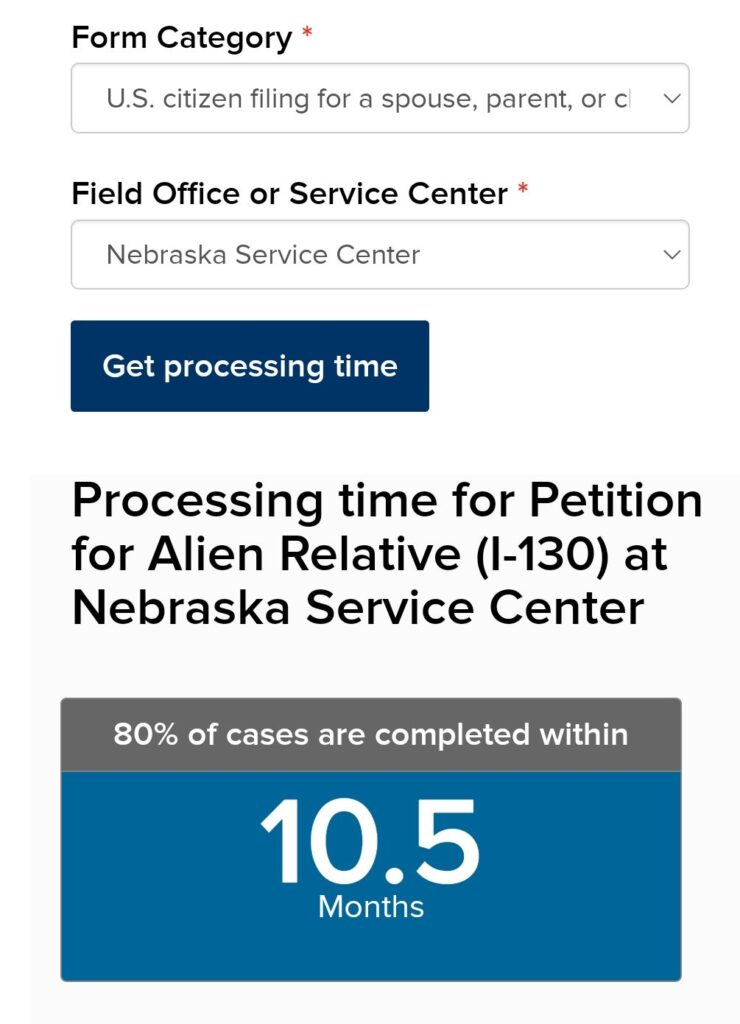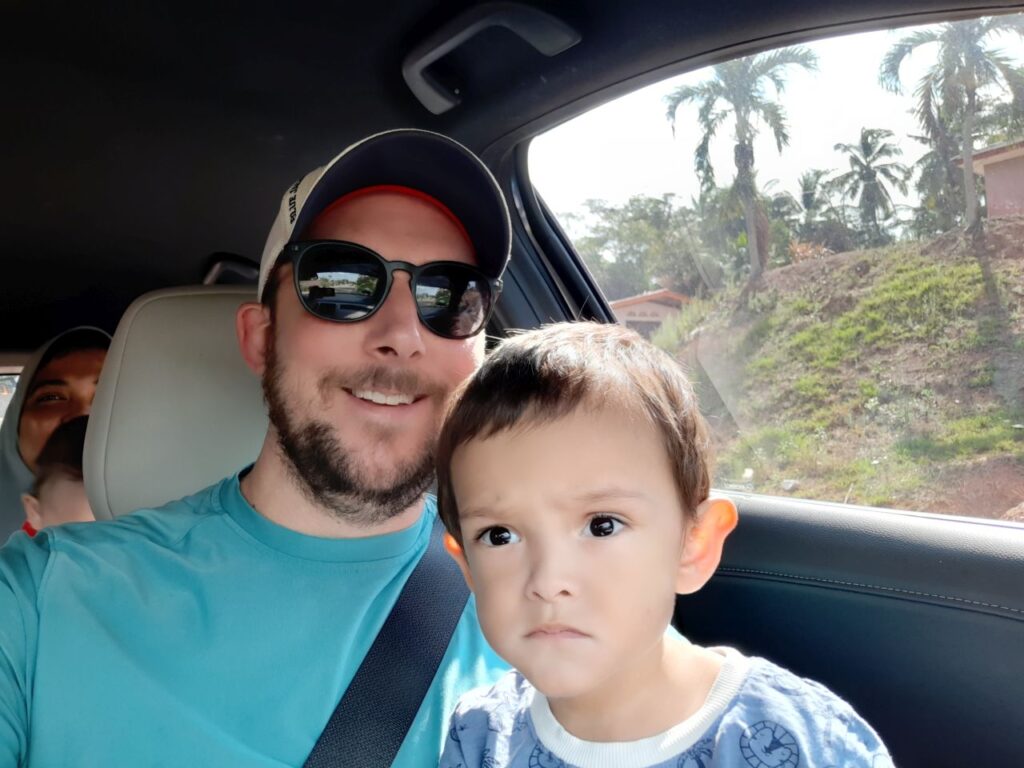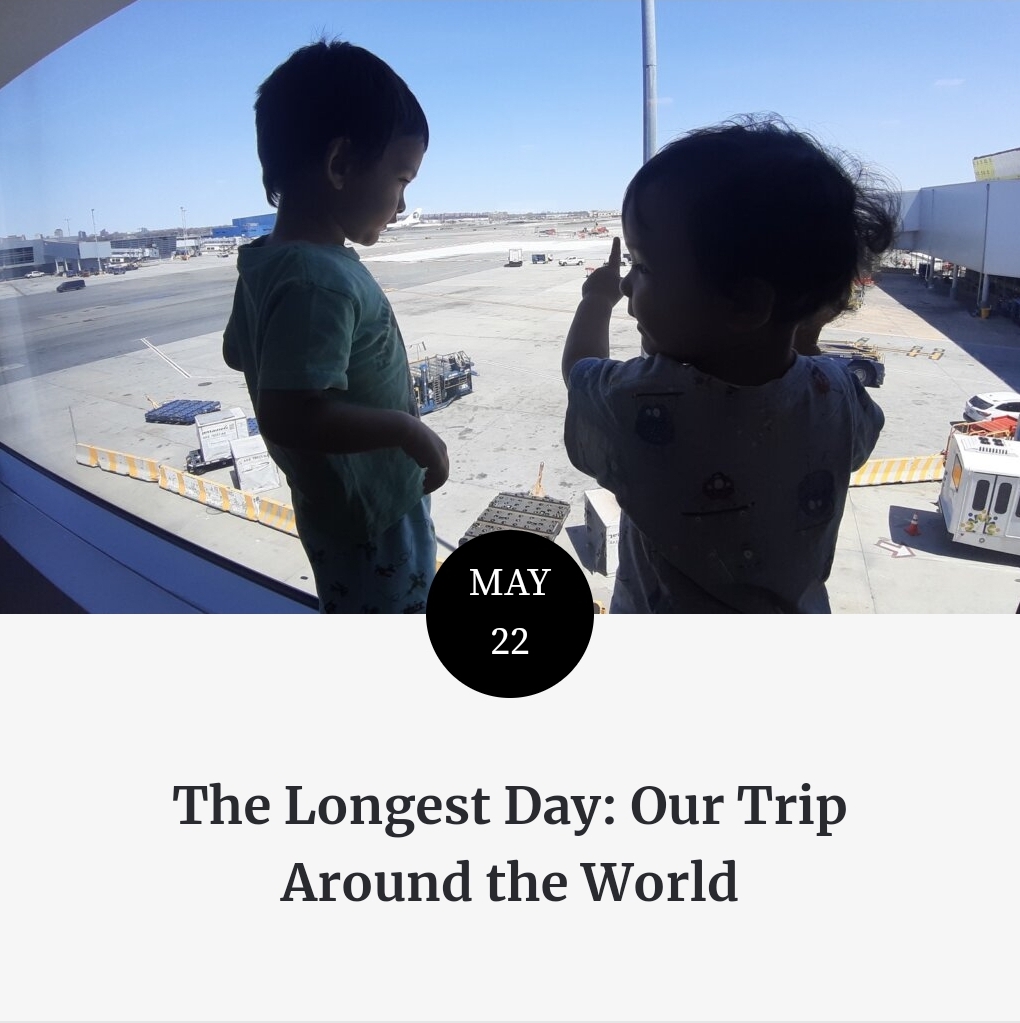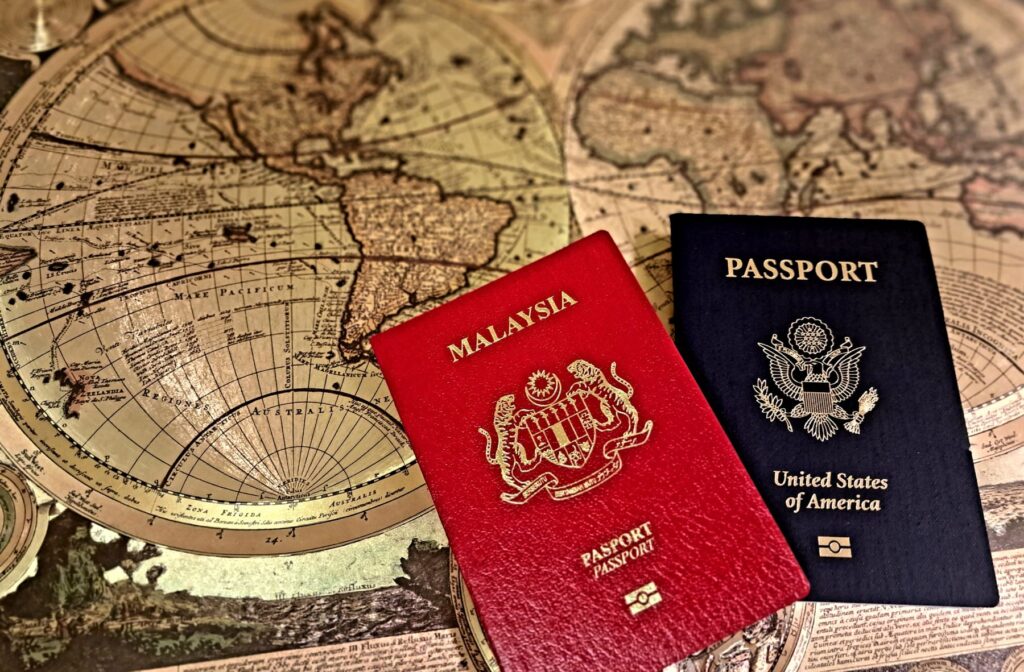It’s been six months since my family touched down in the United States. We’ve enjoyed hikes, home cooking, and a few holidays along the way.

As everyone settles into life here, I’ve been reflecting on our journey from a quiet kampung in Malaysia to the mean streets of Solon, Ohio.

International relocation is no walk in the park. I moved abroad in 2019 with one cat, and returned in 2022 with two children. I’ve chronicled each formidable journey, but have yet to tell the story of the real battle: immigration documents.
You see, anybody can buy a ticket and hop on a plane, but legal migration is an administrative slog fraught with bureaucracy, anxiety, and a whole lot of waiting in queues.
Here’s our story.
The Kids
My children were both born in Malaysia. They have Malaysian blood, Malaysian birth certificates, and Malaysian names. In order to relocate to the United States, I had to register each kid with the American embassy via a process called Consular Report of Birth Abroad.
This is a method by which Americans can bestow citizenship on their children born outside the United States. I had to submit a handful of forms, supporting documents, and administrative fees, and make about four trips to the embassy over the course of several months. Also, we took some adorable passport photos of the kids.

Visiting an American embassy is no simple thing. You need an official appointment and go through strict security screening at the gate. This was all doubly rigorous during the covid pandemic, and the fact that we lived several hours away made each trip an elaborate ordeal.
Nonetheless, I crossed the requisite t’s and dotted the myriad i’s, and both my children were granted U.S. citizenship with passports to boot.
That was the easy part.
Next came getting my wife the fabled “Green Card” – a permanent resident document that allows foreign nationals to live indefinitely in the United States.
It was a grueling process that I totally underestimated.
Here’s how we pulled it off in the end.
Step 1: The Petition
There are a few different paths to getting a green card, mostly through family ties or sponsorship by an American employer. Spouse applications are the most common, and my first step was to file a Petition for Alien Relative (Form I-130) with the United States Citizenship and Immigration Service (USCIS).
This was a rundown of all our particulars, with documents demonstrating my citizenship, our legal marriage, and my wife’s intention of immigrating to the United States. Anyone can file a visa petition, and they all get routed to a USCIS processing center and dumped into a giant queue. Depending on the type of petition, the ensuing wait can be anywhere from a few months to a few years.
That’s right, you can send off your forms then go years without hearing anything back. Some visa classes are subject to annual lotteries or quotas, but spouse cases are supposed to be fast-tracked when the petitioner is a citizen of the U.S.A. I read that it would take anywhere from three to six months for our I-130 to process, but it looks like wait times have since stretched to almost a year.

This is where I wish I could go back in time and start the whole thing over. When we began kicking around the idea of moving, I had no idea how long securing an immigration visa would actually take. I wish I’d gotten a jump and filed a petition immediately, just to get our case into the queue.
But then we had our second child… and a few months passed… and by the time I realized what we were up against we had moved into my in-law’s rural village home. I had to bite the bullet and accept that we weren’t going anywhere for a while. It was the kampung life for me! On top of all that, the pandemic slowed everything down and necessitated bombproof immigration docs before we could ever set foot on a plane.
So I dug in and waited… and waited… and waited some more. I’d check my inbox every morning for some sign that our petition was moving forward, but there was no change in status for over five months.
From the outside, the USCIS system is an inscrutable black box. You never know what’s going on, and you can’t enquire about your case until an established period of time has elapsed. The reality is that there are hundreds of thousands of green card applications every year, and they all go through the same interminable labyrinth of government bureaucracy. There is no way to speed your case along without some compelling humanitarian appeal, so it’s really just a waiting game and hoping all your documents are on point.
Sometime around last October, I finally got an update that my case was being “actively reviewed”. I have no idea what this meant, but the status lingered for a few weeks until the good word ultimately came through: Our petition was approved.
We did it! We got a green card!
Not even close.
This was just the first step. The government acknowledged that we met the criteria to apply for permanent residency, but we still had many hoops to jump through before seeing the job done.
Step 2: Document Check
So after six months of literally nothing happening, our case was approved by USCIS and transferred to the National Visa Center (NVC). This is the office that handles green card applications from outside the United States. I had to submit a laundry list of civil, financial, and personal documents, along with processing fees (about $500) and an official Application for Immigrant Visa (Form DS-260).
The application was extensive. All kinds of questions about my wife, her family, and her background. It was many pages and I spent a few days on it. I didn’t want to screw anything up.
Along with that, there was an Affidavit of Support (Form I-864) where I pledged financial responsibility and provided tax returns to demonstrate I could support my spouse in the United States. Other requirements included a translated birth certificate, and criminal background checks from every country where the applicant has lived.
I bundled all this together and submitted it through the NVC’s online portal, then the waiting began again. It was excruciating. By now I was tiring of kampung life, and longing to move my family back to the States. It felt like our future was hanging in limbo with no sense of when any of it would end.
On top of that, my wife developed a nasty medical condition that put her in the hospital for several weeks. I was juggling a toddler and a newborn and an ailing wife, and living with my elderly in-laws (who don’t speak English) in a rubber tree village somewhere in Negeri Sembilan, Malaysia.
There were some tough days.
But it wasn’t all bad. I love my in-laws, and they were amazing housing us for so long. We found our own ways to communicate, and the whole family pitched in whenever I needed help. It was a different life. A unique experience. We celebrated birthdays and holidays and traveled all over Malaysia with the kids. I had to be patient and adapt. I embraced the situation I was in.

Even so, I was anxious to move. So when that next notification finally came, my hope surged anew and I logged into my NVC account to see the next steps for our case. It had been three months since I submitted my documents, and the update arrived on my birthday. I was expecting a blanket approval, but instead I got something else.
Request for Evidence (RFE).
Hmmmmmm.
They wanted an additional tax form along with my financial filings. I thought it was kind of redundant, since I had already provided full returns and statements for the accounts in question. Nonetheless, I was on it. Zip, bang, boom. Submitted within twenty minutes of getting the notice. That should do it.
I waited eagerly for a response. One day turned into two. My case was 90% approved, how much longer was it going to take?
I decided to reach out and call the National Visa Center support line. After three hours on hold, a representative told me that my latest submission would be reviewed when it came up in the queue. That could take another three months.
I was devastated.
Here I thought we were moving forward, but instead I just got thrown back to the start. One stupid document. I was mad at myself. Mad at the system. I bought a pack of cigarettes and chain-smoked in a parking lot under the hot Malaysian sun.
There had to be another way. I could write to a congressman. Contact a lawyer. I started searching around online and found one potential avenue for speeding up our case: something called an Expedite Request. It was a long shot, but what the hell? Most people said it was worthless. You needed some life-or-death justification to skip ahead in the queue. Nonetheless, I had nothing to lose at this point, so I wrote a compelling appeal and sent it off.
Now I was back to waiting again. I didn’t know if our case would be adjudicated in three weeks or three months. On top of that, I was now gun-shy about the NVC system, and fearing I’d wait it out just to get another RFE. The whole process felt so helpless and dehumanizing. I needed a miracle.
And then it came!
My expedite request was approved! It took less than a week. I still can’t believe it. I remember getting that email and jumping out of bed with joy. Our case was being transferred to the American Embassy in Kuala Lumpur, the final stage in a saga that had already dragged on for nine months…
Step 3: Interview with the Embassy
So of course I then heard nothing for about three weeks. I tried reaching out to the embassy, but got no response. Finally, when I was in the car one day traveling through the middle of nowhere, I got an email asking some preliminary questions about our case. I responded immediately, then heard nothing for a few more days. Another email trickled in. Could I verify this document? Could I provide this additional form? Yes. Yes. Yes. Here’s whatever you want.
This entire ordeal had been building to one final step: an interview at the embassy where they would decide whether to grant our visa or not. Before we could do that, my wife had to undergo a medical screening with a civil surgeon in Kuala Lumpur. They check for certain communicable diseases and mental health issues, and verify that the applicant has all the required vaccines.
We set up the appointment, another big excursion into the city with six of us in the car. We stayed at a hotel near the doctor’s office and showed up first thing in the morning. She passed! It was actually pretty easy. Now we could finally schedule our embassy interview. This meeting I had been dreaming about for over a year.
I got all our documents in order. Duplicate. Triplicate. I was not going to be denied.
We loaded everyone into the car again and shacked up in a hotel next to the embassy the night before. We showed up that morning alongside dozens of other visa applicants (mostly Chinese students) and waited around for two hours before someone finally called our name.
“Take a breath,” I told my wife. “They aren’t going to deny us now.”
The purpose of the interview is mainly to verify your documents and evaluate the validity of your marriage. Some people try to circumvent the green card system with phony marriages, and I read stories of officers grilling applicants to determine if theirs was a genuine relationship or not. “What’s his favorite color? What’s her mother’s maiden name? Which side of the bed do you sleep on?”
I didn’t expect much of a grilling, and we really didn’t get one. We’d been married for five years and had two children together. Whatever red flags they look for, we weren’t it. The interview took ten minutes and I just tried to stay relaxed throughout. The officer seemed satisfied and retreated to the back.
This was it. The moment we’d been waiting for. We were finally going to get visa approval after months of paperwork and patience. I had already booked our plane tickets and I was ready to dance down the embassy steps on our way out.
Then the officer came back.
“There’s a problem with some of your financial forms.”
Are you #$%*ing kidding me?
They said that my statements were old, and they wanted updated copies. This was INFURIATING, because I had asked about it SPECIFICALLY in our correspondence a few weeks prior. The documents I submitted were several months old, because that’s how long the system took to approve them. No problem. I kept my cool.
I convinced the officer to hold my wife’s passport while I ran back to our hotel across the street. I had everything right there on my laptop, and uploaded the requested documents within the hour. That should do it.
Still, I was salty. Instead of walking out with a visa secured, they handed me a piece of paper that said we were ineligible on some administrative BS. I’d worked so hard for this. I wanted my catharsis. Oh well.
We drove back to the kampung, and I sweated out one more weekend before I finally got confirmation that our visa was on its way.
Hallelujah.
The visa was to be placed in my wife’s passport and returned via courier. The delivery van came to our village a week later, but couldn’t find our house. So it was we met this guy in a parking lot to pick up our priceless immigration forms. It was one year to the day since I filed our petition with the USCIS.
Whew.
Step 4: Going Green
After all this time and toil, we still didn’t have the actual “green card” in hand. What we had was an immigration visa, valid for six months, that would allow my wife to enter the country as a legal permanent resident. The next step was to actually make the trip, and you can read all about it here:

When we did finally land in the United States, we passed through immigration with flying colors. All the hard work, all the setbacks I pushed through had finally paid off. The last step was one more USCIS administrative fee ($220), and our green card arrived in the mail six weeks later.

So what did I learn? Well, a lot of things. Immigration documents are no joke. I’ve watched enough episodes of To Catch a Smuggler to appreciate that you don’t mess around with immigration procedures at the airport. Living abroad, I was always keenly aware that my residency rights were conditional, and we endured numerous long days in Malaysian ministries to keep my documents up to date.
Ironically, the United States is one of the easier countries in the world to get permanent residency or citizenship. It’s almost impossible for a foreigner to get PR in Malaysia, and I’ve read about people living there for decades who still have to renew their visa every couple of years. The United States remains a country of immigrants, and there is a path to residency for almost anyone if you’re willing to put in the work.
That said, there are also many people struggling with the demands of a system that is unforgiving and sometimes Kafkaesque. I would often browse immigration message boards on Facebook or Reddit, and I read some absolute sob stories about convoluted cases or outright denials. It’s a brutal game.
We had a few things going for us, namely that our marriage was already registered in the U.S., and Malaysia is not a high-traffic source of immigrants. Some countries are much more competitive, and the processing times are much, much slower. If you are trying to get a green card from someplace like India or Mexico, it can take months or years just to get a document in the door.
Some people hang their hopes on the diversity lottery, or trying to find an American employer that will sponsor their case. We had a simple, straightforward, marriage-based application, and the whole process still took over a year. I will never take our situation for granted, and I hope my story can help someone else grinding along a similar path.
In the end, I’m very proud of what I was able to pull off. I did everything myself, with no legal help or anyone to hold my hand. There are some things I screwed up, and some things I’d do differently, but at the end of the day I got my Malaysian wife and kids all the appropriate documents to live permanently in the United States. It’s the kind of thing my dad would have been SO HELPFUL with if he was around, but I did my best to channel his instincts as I navigated my family through this complex ordeal.
I’m also grateful that I live in this era of online resources and tools. The internet was invaluable for research, networking, and submitting all the necessary forms. I can’t imagine what it would have been like thirty years ago to do the whole thing by international mail.
Anyway, I hope you found our story interesting, and if you ever have any questions please drop me a line. My wife is doing much better, and we’re all enjoying life here in the States. It was a long road, but it was worth it.
Happy holidays.





The BEST part of all, you and your family are now home.